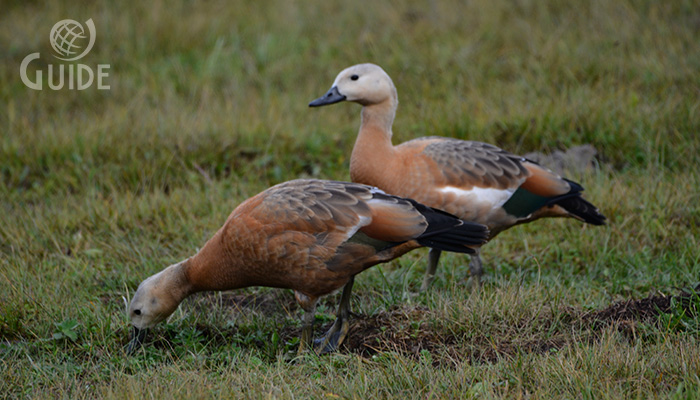 English: Ruddy Shelduck
English: Ruddy Shelduck
Russian: Огарь
German: Rostgans
French: Tadorne casarca
Mongolian: Хондон ангир
Japanese: アカツクシガモ (Aka-tsukushigamo)
Body length: 58-70 cm
Wing span: 110-135 cm
Breeding visitor /wintering
Breeding season: May-August
Egg number:
8-12 (occasionally 16)
Egg color: Slightly glossy
Brood: 1 per year
Global status: Least Concern
Regional status: Least Concern
Habitat: Breeds in variety of inland habitats: on
vast steppes at shores of lakes or saltmarshes, along rivers, in hills and even
on barren, rocky mountain-sides, at times far from nearest water. Nests in hole
in cliff, bank, tree or ruin. Largely migratory. Often seen flying at
considerable height. Records in W an N Europe mainly involve escapes from
captivity, since it is a commonly kept bird in wildfowl collections and parks,
but influxes of wild birds sometimes occur.
Food: Green plants, insects, fishes, frogs,
and worms.
Identification: Roughly
the same size as Shelduck (marginally larger), and has similar proportions,
with fairly long neck and legs, long and rather narrow wings. Body bright
orange-brown, head paler cinnamon-buff or creamy-white, especially pale on
forehead and face. Rump, tail and flight-feathers black, partly with greenish
gloss. Forewing (upper and under) pure white. Bill black.
- Adult
♂: Narrow black neck-collar. Slightly darker orange-brown on mantle and breast.
- Adult
♀: No neck-collar. Tendency to have more clearly set-off white ‘face-mask’.
- Juvenile:
Resembles ♀, but has grey wash on white of forewing.